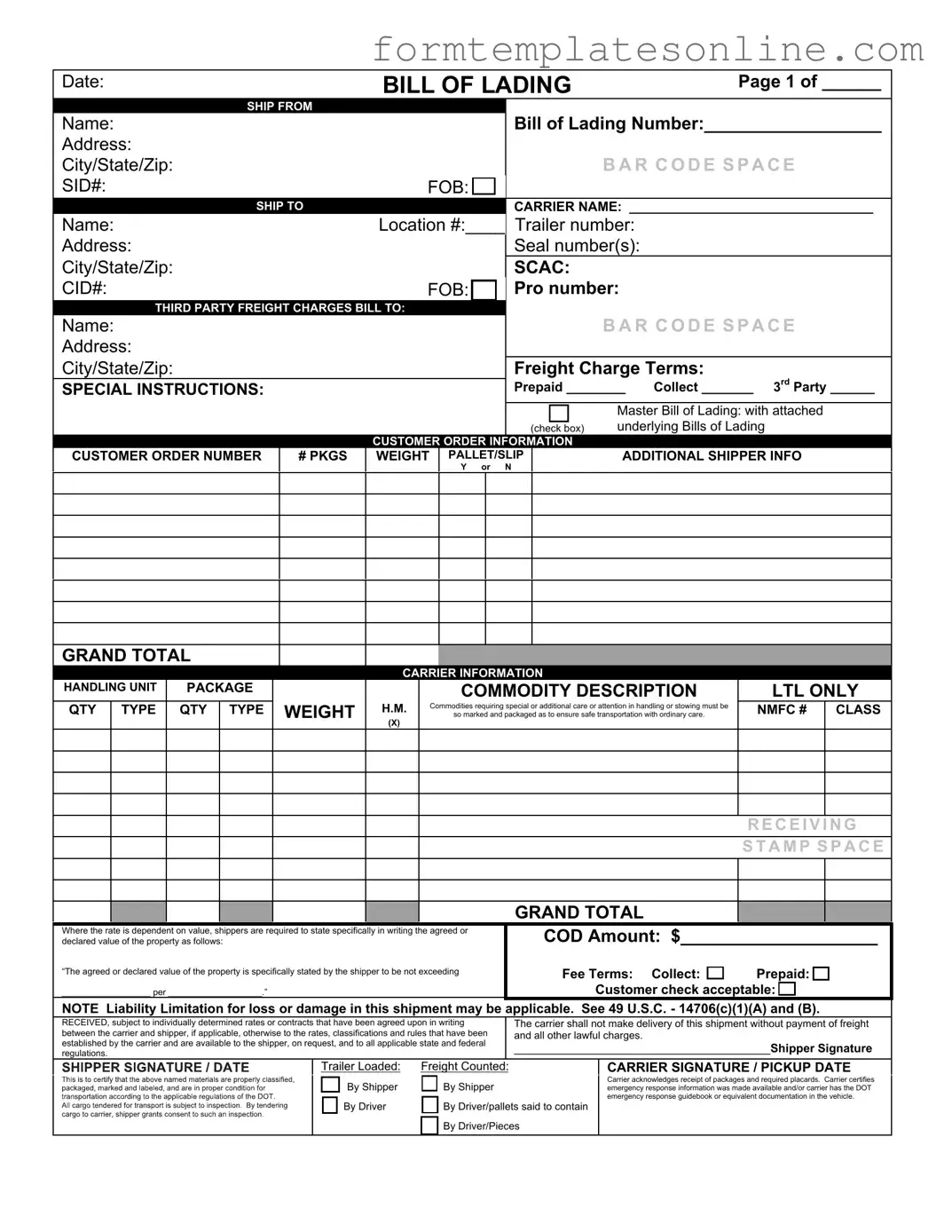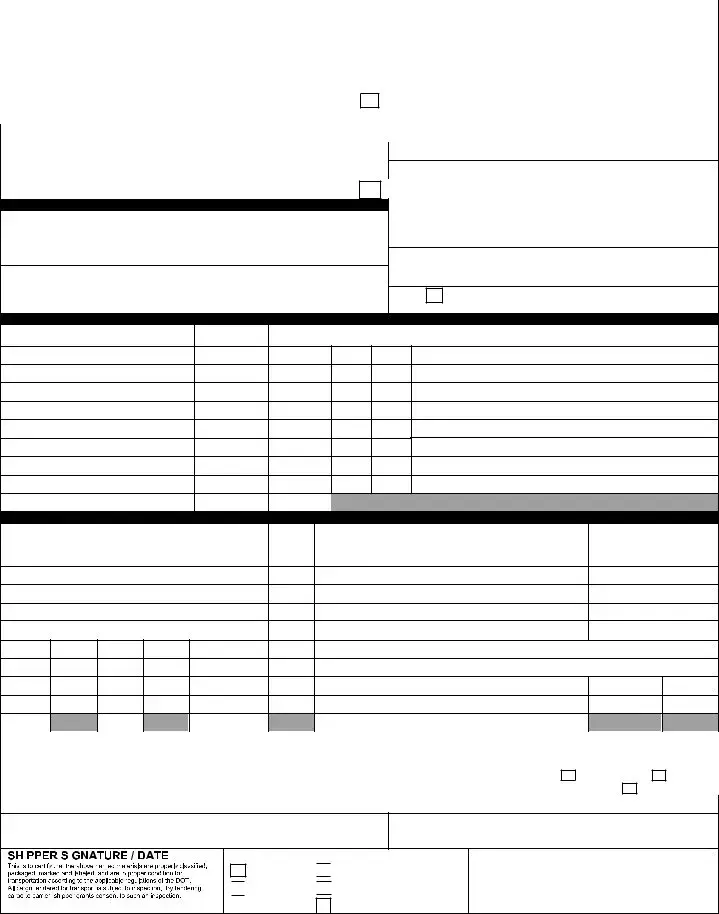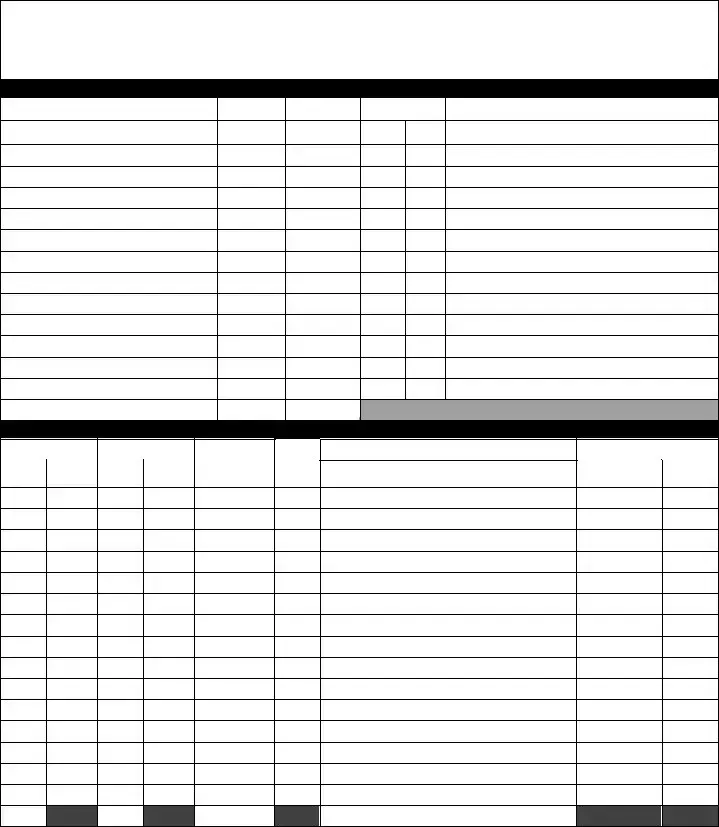What is a Bill of Lading?
A Bill of Lading is a legal document issued by a carrier to a shipper. It serves multiple purposes: it acts as a receipt for the goods being transported, a contract for the transportation of those goods, and a document of title, which can be transferred to others. This document is crucial in the shipping industry, as it outlines the details of the shipment, including the type of goods, quantity, and destination.
What is the purpose of a Supplement form?
The Supplement form is used to provide additional information or to amend details that may not be fully captured in the original Bill of Lading. This could include changes in the shipment's destination, the consignee's information, or other important details that may arise after the initial document is issued. It ensures that all parties have the most accurate and up-to-date information regarding the shipment.
Who needs to complete the Bill of Lading with a Supplement form?
The shipper or the party responsible for the shipment typically completes the Bill of Lading and any necessary Supplement forms. This responsibility may also extend to freight forwarders or logistics companies involved in the shipping process. Ensuring that all information is accurate is vital, as it can impact the delivery and handling of the goods.
What information is typically included in a Bill of Lading with a Supplement form?
Commonly included information consists of the names and addresses of the shipper and consignee, a description of the goods, the quantity being shipped, the shipping route, and any special instructions. The Supplement form may also include details such as revised delivery dates, changes in the handling instructions, or additional charges that may apply.
Is a Bill of Lading with a Supplement form legally binding?
Yes, both the Bill of Lading and the Supplement form are legally binding documents. They create obligations for both the shipper and the carrier. Once signed, these documents can be enforced in a court of law. It is essential that all parties understand their rights and responsibilities as outlined in these documents.
What happens if there is a discrepancy in the information provided?
If there is a discrepancy in the information on the Bill of Lading or the Supplement form, it can lead to delays, additional costs, or even legal disputes. It is crucial for all parties to review the documents carefully before signing. If errors are discovered, they should be corrected immediately using the Supplement form to ensure clarity and accuracy.
Can a Bill of Lading with a Supplement form be transferred to another party?
Yes, a Bill of Lading can be transferred to another party. This is often done through endorsement, which involves signing the document over to another individual or company. The Supplement form may also need to be endorsed if it contains relevant information that affects the new party. This transfer of title is important for the movement of goods and can affect ownership rights.
How does the Supplement form affect the delivery of goods?
The Supplement form can significantly impact the delivery of goods. If it contains changes to the destination or consignee information, the carrier must follow these updated instructions. Failure to do so could result in the goods being delivered to the wrong location, leading to complications and potential financial losses.
What should I do if I lose the Bill of Lading with a Supplement form?
If the Bill of Lading or the Supplement form is lost, it is essential to notify the carrier immediately. They may issue a duplicate or a replacement document, which can help mitigate any potential issues with the shipment. It is advisable to keep copies of all shipping documents in a secure location to prevent loss.
Are there any fees associated with using a Bill of Lading with a Supplement form?
There may be fees associated with the issuance of a Bill of Lading and any necessary Supplement forms. These fees can vary depending on the carrier and the specific services provided. It is important to inquire about any potential costs upfront to avoid surprises later in the shipping process.


 to certify that the above named materials are properly classified, packaged, marked and labeled, and are in
to certify that the above named materials are properly classified, packaged, marked and labeled, and are in proper condition for transportation according to the applicable regulations of the DOT.
proper condition for transportation according to the applicable regulations of the DOT.
 By Shipper
By Shipper
 By Driver
By Driver 
 By Driver/pallets said to contain
By Driver/pallets said to contain